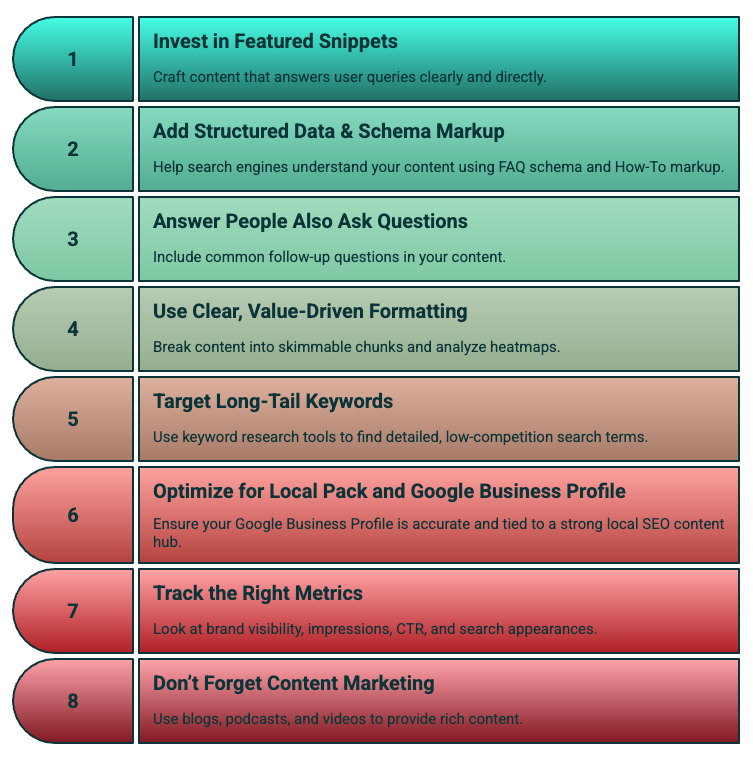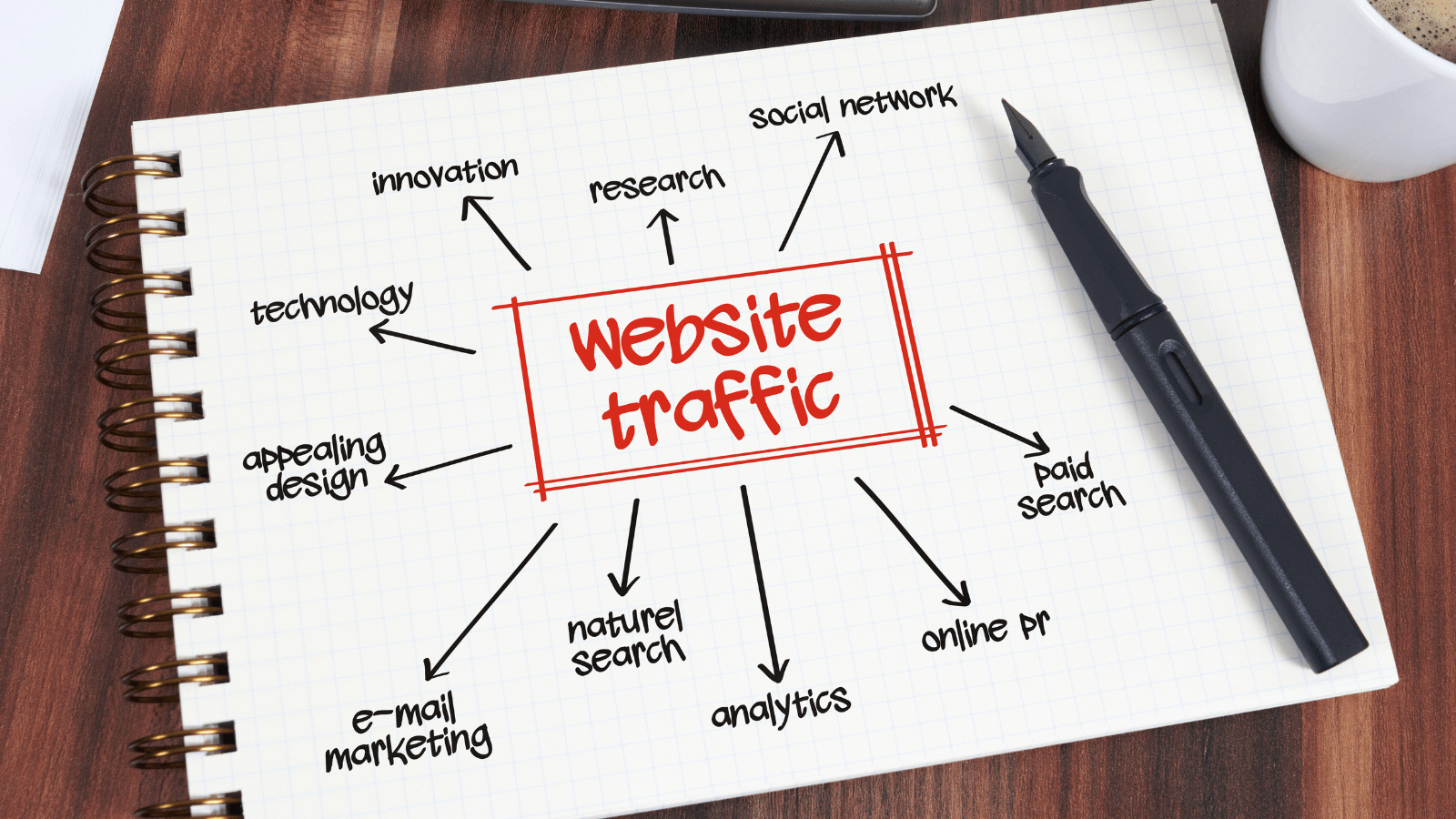Welcome to the era of zero-click searches.
With Google evolving from a search engine into an answer engine, more users than ever before are finding what they need without clicking through to a website—something that used to be a digital marketer’s worst nightmare.
But here’s the truth: zero-click doesn’t mean zero value.
When you play it smart, you can use zero-click to your advantage, and we’re here to tell you how!
As a digital marketing agency obsessed with data and performance, we at Digital Strike know how much this shift impacts your SEO strategy, traffic, and overall marketing efforts. So let’s dive into what these types of searches are, the pros and cons, how to optimize for them, and how AI Overviews are changing the game.
What Are Zero-Click Searches?
A zero-click search happens when a user enters a search query and gets the answer directly in the search engine results page (SERP); therefore, they do not need to click into any websites in particular.
They get their answers through:
- Featured snippets
- Knowledge panels
- People Also Ask (PAA) boxes
- AI Overviews
- Local packs
The SERP features above offer instant answers to questions ranging from “What’s the weather today?” to “Best Italian restaurants near me” and more. People no longer have to click on article after article to get the information they need. In fact, according to Semrush data, 25.6% of desktop searches and 17.3% of mobile searches result in zero clicks. All of that is potential traffic getting absorbed right on the SERP.
The Pros and Cons of Zero-Click Searches
Let’s be real. On the surface, zero-click results sound like a nightmare. You work hard on your organic search content, invest in structured data and search engine optimization (SEO), only to have Google display your content without sending the user to your site.
But it’s not all bad. In fact, it can be a strategic advantage when handled correctly.
Pros:
- Increased brand visibility: Appearing in a featured snippet or AI Overview positions your brand as a trusted resource.
- Authority building: Being the “quick answer” that Google chooses boosts your reputation.
- Voice search benefits: Many zero-click results power answers for voice assistants and mobile searches.
- More impressions for competitive keywords: Even if they don’t click, users are seeing your brand.
- Increased CTR on branded queries: Familiarity leads to higher click-through rates when searchers do want more info.
Cons:
- Fewer site visits: Less search traffic from common queries.
- Lower conversion rate opportunities: If they don’t visit, they can’t convert.
- Limited context: Concise answers in the SERP may lack the nuance needed to truly inform.
- More control to Google: They decide what gets surfaced and how.
Bottom line? Optimizing for zero-click doesn’t replace SEO. It is SEO, just redefined.
Why You Still Want to Optimize for Zero-Click Searches
You may be wondering: if people aren’t clicking, why even bother?
Simple. Being present is still powerful, and here’s how to do that…
You want to:
- Capture attention: You still need to try to show up in AI Overviews, People Also Ask, and related questions.
- Build authority: Having high-quality faq sections and schema markup help Google trust your site.
- Feed the funnel: Even if users don’t click now, they remember your brand when it’s time to buy.
- Dominate for local: Showing up in the local pack or Google Business Profile drives action for local businesses.
- Shape the narrative: The info shown in zero-click results often comes from content you control.
Optimizing your digital marketing strategy for zero-click results means aligning with how people consume info today, thereby, making a better user experience.
Where AI Overviews Fit In
With the rise of AI Overviews (formerly known as Search Generative Experience or SGE), we’re seeing a new kind of search engine behavior emerge.
These AI-powered direct answers pull from multiple sources and give users a synthesized answer to complex queries. And they often appear before both paid ads and organic listings.
That means:
- You can appear in an AI Overview even if you’re not the #1 organic result
- Not every AI Overview source is a high-ranking site in traditional SEO rankings
- There are more opportunities to be cited in search engine results if your content is in-depth, structured, and context-rich
In other words, AI Overviews can democratize visibility. They’re not just rewarding high backlinks or domain authority—they’re rewarding helpful content.
Our advice? Treat AI Overviews like a new search frontier.
How to Optimize for Zero-Click & AI-Powered SERPs: Steps to Take
Ready to rethink your search strategy? Here’s how to get started:

Step 1. Invest in Featured Snippets
Craft content that answers user queries clearly and directly. Use headings, bullet points, and concise definitions. Think: “What is local SEO?” or “How does Google Ads work?”
Step 2. Add Structured Data & Schema Markup
Help search engines understand your content using FAQ schema, How-To markup, and more. This unlocks search features like knowledge panels, carousels, and instant answers.
Step 3. Answer People Also Ask Questions
Include common follow-up questions in your content to increase chances of appearing in related questions.
Step 4. Use Clear, Value-Driven Formatting
Break content into skimmable chunks. Use landing page optimization tools and analyze heatmaps to make sure your layout enhances readability.
Step 5. Target Long-Tail Keywords
Users ask specific questions. Use keyword research tools to find detailed, low-competition search terms.
Step 6. Optimize for Local Pack and Google Business Profile
For local search, make sure your Google Business Profile is accurate, includes your phone number, and is tied to a strong local SEO content hub.
Step 7. Track the Right Metrics
Instead of just clicks, look at brand visibility, impressions, CTR, and search appearances in tools like Google Search Console and Google Analytics.
Step 8. Don’t Forget Content Marketing
Blogs, podcasts, and videos still matter. They give search engines rich content to pull from and let you tell a bigger story.
Should You Worry About ChatGPT and Other AI Tools?
AI tools like ChatGPT can answer user queries without touching Google at all. That’s a whole other challenge.
But here’s the good news: these tools often pull from the same public sources. If you’re creating high-quality, well-structured, expert-driven content, your info still has a shot at showing up.
Even better? Users still turn to Google when they want validation, pricing, or to take action.
Zero Click Doesn’t Mean Zero Opportunity
It’s time to stop treating zero-click searches like the enemy. If your brand is showing up in AI Overviews, featured snippets, or knowledge panels, you’re doing something right.
You’re building authority. You’re shaping the conversation. And ultimately, you’re staying ahead in a search engine optimization world that’s evolving fast.
Want to optimize for a zero-click world while still driving qualified organic traffic? That’s what we do.
Let’s build a smarter SEO and content strategy that works with the future of search—not against it.






